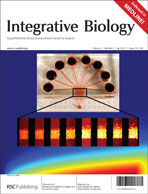The in vitro development of human myotubes carrying genetic diseases, such as Duchenne Muscular Dystrophy, will open new perspectives in the identification of innovative therapeutic strategies. Through the proper design of the substrate, we guided the differentiation of human healthy and dystrophic myoblasts into myotubes exhibiting marked functional differentiation and highly defined sarcomeric organization. A thin film of photo cross-linkable elastic poly-acrylamide hydrogel with physiological-like and tunable mechanical properties (elastic moduli, E: 12, 15, 18 and 21 kPa) was used as substrate. The functionalization of its surface by micro-patterning in parallel lanes (75 μm wide, 100 μm spaced) of three adhesion proteins (laminin, fibronectin and matrigel®) was meant to maximize human myoblasts fusion. Myotubes formed onto the hydrogel showed a remarkable sarcomere formation, with the highest percentage (60.0% ± 3.8) of myotubes exhibiting sarcomeric organization, of myosin heavy chain II and α-actinin, after 7 days of culture onto an elastic (15 kPa) hydrogel and a matrigel® patterning. In addition, healthy myotubes cultured in these conditions showed a significant membrane-localized dystrophin expression. In this study, the culture substrate has been adapted to human myoblasts differentiation, through an easy and rapid methodology, and has led to the development of in vitro human functional skeletal muscle myotubes useful for clinical purposes and in vitro physiological study, where to carry out a broad range of studies on human muscle physiopathology.


 Please wait while we load your content...
Please wait while we load your content...